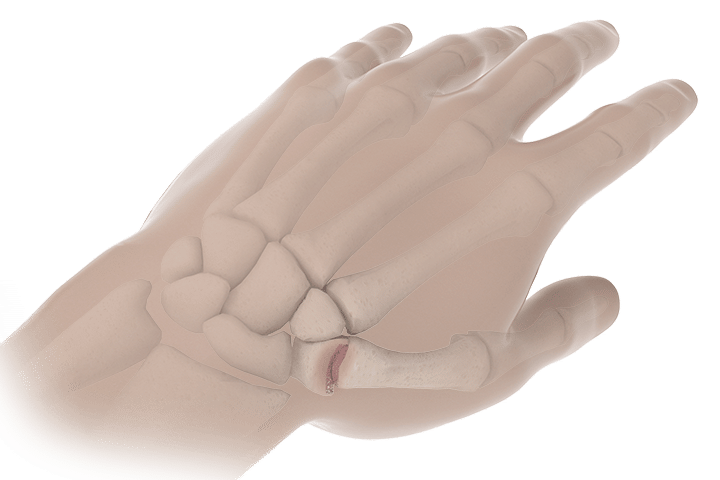
Anatomy of the Thumb Joint
The ability to perform tasks such as writing, opening jars, playing musical instruments, turning doorknobs and handling tools would not be possible without the high degree of maneuverability of the thumb joint, also known as the carpometacarpal (CMC) joint.
The thumb joint is comprised of two bones, the first metacarpal, and the trapezium. What makes the thumb so unique is that it is a saddle joint. Unlike hinge joints found in your fingers and knees, the thumb joints have much greater range of motion, allowing your thumb to spread out wide to grab large objects while allowing it to move inward to pinch small objects. This high amount of maneuverability along with the fact the joint surfaces are not congruent surfaces makes the thumb joint intrinsically unstable, and therefore the thumb joint relies on several ligaments (or soft tissue attachments) for stability. When arthritis in the joint occurs, the friction not only makes it painful but more difficult to move as well.
Thumb Arthritis
Arthritis is a condition where the smooth cartilage that covers the ends of bones within a joint is destroyed. This smooth cartilage allows the joint to glide without friction or pain. There are several types of arthritis that can cause this; however, osteoarthritis (wear-and-tear) is the most common. Once the cartilage is destroyed, no proven methods exist to replace or regrow it.
When arthritis occurs in the thumb joint, it can cause severe pain, swelling, decreased strength, and motion. It often becomes difficult to do simple everyday tasks and the pain can become so severe that you may experience pain at night when sleeping.
Common symptoms
- Pain with tasks that require pinching or gripping such as opening a jar, turning a key, or pinching an object
- Swelling and tenderness at or around the base of the thumb
- Loss of strength
- Bump or enlargement at the base of the thumb
- Limited motion
- Dull aching pain after use
Diagnosing the condition
Your doctor will first ask you about the symptoms you are experiencing and or previous injuries you suffered from. Your doctor may ask you to move your thumb while placing pressure against the joint. If you experience pain or a grinding sound is heard, arthritis is often the contributing factor.
If arthritis of the thumb is suspected, an X-ray can be taken to determine the amount of damage. From the x-ray the doctor will evaluate the joint space, alignment, and if any bone spurs (osteophytes) are present. In the most common grading scale, there are four stages of arthritis, with stage I (1) being minimal and stage IV (4) being severe. The stage of arthritis along with the severity of the symptoms will determine the next step.
Depending on the severity or stage of arthritis, it is usually first treated with conservative care.
